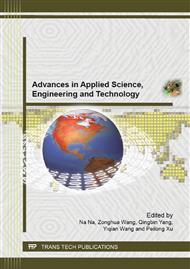p.197
p.201
p.207
p.211
p.215
p.221
p.225
p.229
p.233
Preparation and Characterization of Electrospun Poly(vinyl Alcohol)/Silk Fibroin Nanofibers as a Potential Drug Delivery System
Abstract:
A series of poly(vinyl alcohol)/silk fibroin nanofibers loaded with 10 wt.% vanillin were successfully prepared from aqueous solutions via electrospinning. The morphology, weight loss and swelling ability of the nanofibers were characterized. The controlled release characteristics of vanillin in the nanofiber mats were evaluated by in vitro release test. Vanillin-loaded nanofibers had smooth surfaces like drug-free nanofibers, and showed thinner diameter than the latter. The release rate of vanillin in the nanofiber mats decreased with the increment of silk fibroin content, so by regulating the content the drug release could be controlled. Moreover, after treated with ethanol the nanofiber mats showed better stability against disintegration in water and sustained release rate of vanillin than untreated mats.
Info:
Periodical:
Pages:
215-220
Citation:
Online since:
June 2013
Authors:
Keywords:
Price:
Сopyright:
© 2013 Trans Tech Publications Ltd. All Rights Reserved
Share:
Citation:


